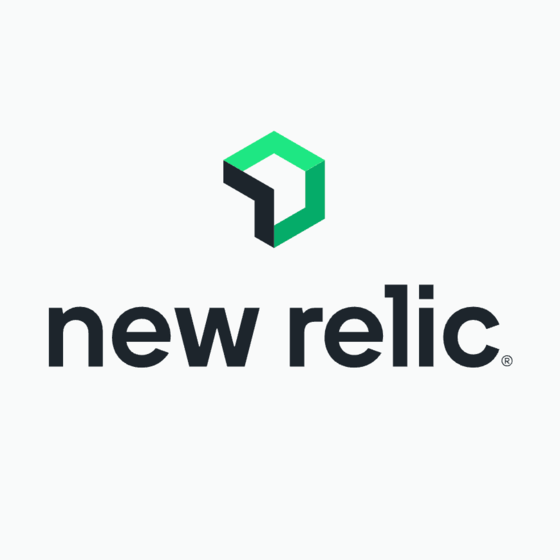10 Best Quality Engineering Tools Shortlist
Here’s a shortlist of the best software to help with your quality engineering process:
Our one-on-one guidance will help you find the perfect fit.
With so many different quality engineering software available, figuring out which is right for you is tough. You know you want to ensure that engineering products meet specific regulatory, quality, and market standards but need to figure out which tool is best. I've got you! In this post I'll help make your choice easy, sharing my personal experiences using dozens of different quality engineering tools with various teams and projects, with my picks of the best quality engineering software.
What Is Quality Engineering Software?
Quality engineering software comprises tools and applications used to ensure and enhance the quality of engineering products and processes. These software solutions facilitate various activities such as compliance management, process optimization, defect management, and performance monitoring. They are used extensively in engineering projects to manage and improve product quality throughout the development lifecycle, from design to production.
The benefits of using quality engineering software include improved product quality and efficiency in quality assurance processes. They aid in maintaining compliance with industry standards and regulations, thereby reducing the risk of non-compliance. These tools help in identifying and mitigating risks, leading to more reliable and safe engineering products. They also provide detailed data analysis and reporting, enabling informed decision-making. Overall, quality engineering software plays a crucial role in enhancing customer satisfaction and fostering collaboration among teams involved in quality management.
Overviews Of The 10 Best Quality Engineering Software
Here’s a brief description of each of the quality control tools to showcase each tool’s best use case, some noteworthy features, and screenshots to give a snapshot of the interface.
Best for AI insights using natural language via a chat interface
New Relic is a performance monitoring system for data for engineers to monitor, debug, and improve their entire stack. It's designed to help you keep an eye on your software's health and performance with a variety of flexible reports and dashboards. It's incredibly useful for getting a clear, detailed picture of how your software is performing. It's not just about spotting problems—although it's great at that—it's also about understanding trends, identifying potential issues before they become big problems, and generally keeping everything running smoothly.
The APM (Application Performance Monitoring) feature is a feature worth noting. It gives you real-time insights into your software's performance, so you can spot and fix issues quickly. Then there's the Infrastructure Monitoring feature, which lets you keep an eye on your entire infrastructure, from servers to cloud services. And the Browser Monitoring feature is great for understanding how your software is performing from the user's perspective. They also have a generative AI assistant, New Relic Grok, which can inject conversational questions like 'What caused this CPU spike?' and answer them via a chat interface.
Integrations include over 600 apps that include cloud platforms like AWS, Google Cloud, and Microsoft Azure, CI/CD tools like Jenkins, CircleCI, and Travis CI, communication tools like Slack and PagerDuty, and other monitoring and analytics tools like Grafana, Datadog, and Splunk. It also has an API you can use to build custom integrations.
New Relic has a free version available. Their paid plans start at $49/user/month and offer additional features, like SAML single sign-on, 24x7 support availability, 2-hour critical initial support response SLA, and additional data ingest per month.
Best continuous testing automation platform for enterprise
Tricentis’s Continuous Testing Platform supports the entire testing lifecycle across enterprise and custom applications. Tricentis uses AI-driven data analytics to power faster, smarter testing and its platform is fully automated and codeless, making it easy and quick to set up and run automated tests, whether you’re a developer or a business leader.
The Tosca automated testing module separates the automation model from the underlying application. This means that changes to the application’s source code don’t impact the test automation. This helps to accelerate software testing by removing bottlenecks.
Tricentis pricing information is unavailable. Free trials are available for the qTest and NeoLoad modules.
Appsurify’s TestBrain is a risk-based testing solution that delivers test results on a per-change basis. It's one of the best quality engineering software tools in the market for experienced testing teams who want to build more efficiencies into their test automation practice, providing features that help QA teams streamline their software testing environment, reduce CI pipeline build times, achieve Shift Left testing, and reduce overall costs.
Appsurify has two main subscription plans available: Plus and Professional. Appsurify Plus is tailored for small businesses and startups, and it starts at $59 per seat/month with a 60-day free trial. The Professional plan best suits the QA automation testing requirements of midsize teams and large enterprises. SaaS and on-premise license options are available, but the latter is only bundled with the Professional plan.
Both subscription packages come with a variety of features such as smart test selection and execution, auto-mapping of tests to code, advanced reporting, advanced analytics, risk alerts, and flaky failure prevention. Both plans support various test types, including UI, E2E, integration, unit, API tests, and more. The features exclusive to the Professional package are prioritized manual testing, full onboarding, and priority support, although standard support and initial setup onboarding are included in the Plus package too.
Perforce’s suite of software development tools for enterprise teams includes a variety of solutions for planning, developing, and creating; testing and validating; and operating, managing, and scaling software.
Perforce has a range of DevOps solutions that address quality, compliance, security, speed, and collaboration throughout the entire product lifecycle from ideation to launch. This makes it an excellent choice for enterprise quality engineering.
Each Perforce tool has its own pricing model, available on request. A free trial is available.
Katalium is a test automation framework that makes it easier to automate software testing using TestNG, Selenium, and other popular open-source test automation frameworks within Visual Studio Code.
To put it simply, Katalium gives software testers a blueprint for test automation projects, minimizing the learning curve to enable teams to ship higher quality products in less time.
Katalium is an open-source project by Katalon, which offers a robust suite of enterprise software testing automation and TestOps tools.
Katalium is open source and available free of charge.
CucumberStudio helps teams to arrive at a clear shared understanding of precisely what the product should do and co-design effective acceptance tests. CucumberStudio also allows teams to accelerate test cycles through test automation.
Thanks to its seamless Git integration, CucumberStudio serves as a single source of truth by automatically ensuring documentation is up to date, accessible, and easy to understand even for non-technical members of cross-functional teams.
CucumberStudio pricing starts from ~$33.65/per user per month (€29/u/m). CucumberStudio offers a 14-day free trial and a free open source version, CucumberOpen, is also available.
The Inflectra suite is a whole application management and testing product ecosystem, with tools geared towards product managers, developers, and testers to promote quality engineering throughout the software development lifecycle.
Inflectra gives product managers a bird’s eye view of projects, enabling them to track project burndown, review test coverage, and allocate resources where it’s most needed.
For developers, it’s a great tool to centralize everything because it supports effortless IDE integration, source code management, bug and user story tracking, CI management, and automation.
For software testers, Inflectra’s tools facilitate manual testing, testing automation, exploratory testing, and team management.
Inflectra’s pricing varies by tool or bundle and the number of monthly users. Users receive a discount on bundled products. Inflectra does not offer a free trial.
LinearB is a project board specifically designed for dev leads, providing detailed project updates in a single screen. This helps dev leads to track project progress, identify risks such as bottlenecks and high-risk code, and offer assistance where it’s needed most.
LinearB uses team-based metrics (not individual metrics) to help dev leads track quality and efficiency trends and distribute work evenly to prevent team overload or burnout.
LinearB pricing starts from $15 per dev per month and they offer a “free forever” trial for up to 8 devs (with 45 days of data retention).
Apexon is a quality engineering service that aims to help you and your team prepare for new requirements and expectations resulting from digital advancement. Apexon strives to equip you with tools and methodologies to help you navigate the transformation within digital strategies.Apexon provides an abundance of features such as test automation services, which allow you to create and run your own tests. The tool has framework implementation and automated regression testing as a part of their end to end test automation services so you can easily integrate their services within your workflow. Apexon also offers data engineering and service visualization, providing you every opportunity to ensure your application lifecycle is fully covered.Apexon provides customized pricing upon request.
SeaLights is an enterprise software risk scoring tool that enables software development teams to implement quality governance at scale.
SeaLights automatically identifies, analyzes, and flags software quality risks in real-time throughout the SDLC, empowering software teams to deliver quality at speed.
SeaLights pricing information is currently unavailable.
10 Best Quality Engineering Software Summary
| Tools | Price | |
|---|---|---|
| New Relic | From $49/user/month | Website |
| Tricentis Tosca | Starts at $29/month | Website |
| Appsurify TestBrain | $59/seat/month | Website |
| Perforce Suite | No price details | Website |
| Katalium | No price details | Website |
| CucumberStudio | $33.65/per user per month (€29/u/m) | Website |
| Inflectra Suite | No price details | Website |
| LinearB | $15/dev/month | Website |
| Apexon | Customized pricing upon request | Website |
| SeaLights | Pricing is available upon request. | Website |

Compare Software Specs Side by Side
Use our comparison chart to review and evaluate software specs side-by-side.
Compare SoftwareWhat’s the Difference Between QA and QE?
The main difference between quality assurance and quality engineering is that QA takes a corrective approach to quality control, whereas QE takes a preventative approach by applying rigorous quality checks throughout each phase of the software development lifecycle.
The problem with the traditional quality assurance model is that finding and addressing quality issues after the fact is inefficient. This is because it often requires that aspects of the product be redone, leading to delayed launches and higher costs (and, frequently, hasty fixes that don’t always address the quality issues).
For a more detailed analysis of the difference between quality engineering and quality assurance, read our blog on the topic: Quality Engineering Vs. Quality Assurance: Everything You Need To Know.
Types of Quality Engineering Tools
Let’s take a look at some of the different types categories of QE tools and how each of them addresses the needs of your product and team. I’ve linked out to further reading material where applicable.
DevOps
DevOps tools seek to remove siloes in product development, encouraging collaboration between teams across the application lifecycle. This cross-functional collaboration is crucial to quality engineering methodologies as improved communication leads to better alignment and fewer errors and do-overs.
Examples:
- Database Management & Performance Tools
- Configuration Management
- Customer Experience Management
Testing
Testing tools enable quality engineering by allowing stakeholders to design and deploy tests throughout the application lifecycle, accelerating development while promoting quality. Tools such as testing automation and continuous testing tools flag risks early so that fixes can be deployed well in advance of the product going live.
Examples:
- Test Management Tools
- Incident Management Tools
- Bug & Defect Tracking Software
- QA Test Automation Software
- Load Testing Tools
- Mobile Testing Tools
Analysis & Analytics
Analytics tools facilitate quality engineering by collecting and analyzing data to identify patterns and track metrics such as performance and efficiency. When paired with AI and machine learning, data analytics tools can have powerful capabilities for flagging risks and flaws as well as making predictive suggestions or even automatically implementing solutions.
Examples:
- Process Modelling
- UML Modelling
- Requirements Management
- Web Analytics
- SQL Analytics
- Big Data Analytics Tools
- Machine Learning Solutions
Infrastructure
Managed infrastructure services are increasingly popular as they help to ensure that applications have sufficient back-end capabilities to perform, sync, and scale as required, with minimal latency and downtime––and minimal maintenance required.
Examples:
- Cloud Service Management
- Database/Data Management
- Server Monitoring & Management Tools
- Mobile Network Emulation (like Android Emulation)
Related Read: LEADERSHIP IN TEST: A GUIDE TO INFRASTRUCTURE AND ENVIRONMENTS
Development
Development tools range from project and ticket management tools like Jira to code repository management tools, design, and modeling tools, code compilers, code editors, to testing and analysis tools––essentially anything that helps developers to design, build, test, and deploy quality software.
Examples:
- Data Engineering Tools
- SQL Editor
- Software Design/Modeling Tool
- Code Profiling/Performance Checking
Collaboration & Productivity
Collaboration and productivity tools power quality engineering by facilitating effective project management, scheduling, work division, and communication. This helps to ensure that projects run on schedule and on-spec and give project managers greater visibility into team health as well as risks that may impact timelines.
Examples:
- Note Taking/Collaboration
- Application Lifecycle Management (ALM)
- Agile Management
- Instant Messaging/Meetings/Collaboration
- Mind Mapping Tools
Security
Security tools or DevSecOps tools enable teams to embed security compliance protocols and vulnerability management throughout the software development lifecycle. Automation plays an important role in enforcing security standards and testing for and detecting vulnerabilities.
Examples:
- Penetration Testing Tools
- Application Security Testing
Related Read: 6 MAIN PENETRATION TESTING TYPES TO UNCOVER VULNERABILITIES
Cloud-Based Services
Cloud-based services such as APIs make it easier (and faster) to roll out high-quality features or deploy tests without having to build everything from scratch. Whether it’s outsourcing your helpdesk or integrating a plug-and-play chat feature into your app, there are thousands of SaaS products available that can significantly improve your application quality and user experience without adding to your team’s workload.
Examples:
- Cloud Testing Service
- Help desk/service management
Utility
Utility software encompasses a wide range of tools designed to help analyze, configure, optimize or maintain computers to ensure optimal operation. Utility tools like remote desktop clients help to test how your software performs on different devices and operating systems and can be invaluable in troubleshooting and addressing mismatches between software requirements and system capabilities.
Examples:
- Remote Desktop Client
- Natural Language Processing (NLP)
- Terminal Emulator
What do you think of these quality engineering tools?
Have you tried out these tools? Did they work for you? Do you have a useful tool that we missed? Let us know in the comments, we’d love to hear from you!
If you found this guide useful, consider subscribing to The QA Lead newsletter for the latest insights from top thinkers in the quality software niche.
If learning from an internationally renowned, award-winning software engineering consultant, author, and coach is your thing, here's an article you should definitely check out: LEADERSHIP IN TEST: MANAGING PERFORMANCE TESTING.
Also Worth Checking Out:





















